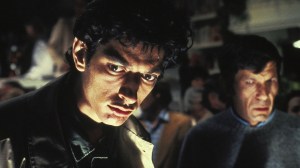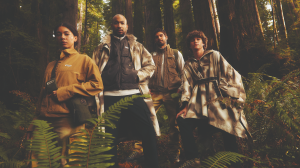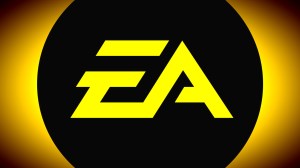Spoiler warning: Brief gameplay spoilers for God of War Ragnarok are present in this review.
Videos by ComicBook.com
God of War Ragnarok is not the game that I was expecting it to be, but that’s not a bad thing. Ever since God of War launched back in early 2018, I have been theorizing and hypothesizing about what would end up happening in the sequel. And while some of my wildest dreams of what Ragnarok would be were perhaps a bit more exciting than the game we got, the finished product is still stellar in plenty of ways.
As the title of the game suggests, God of War Ragnarok sees the franchise’s main protagonist, Kratos, and his son, Atreus, returning to deal with the titular cataclysmic event. Following the events of the previous game, Kratos, Atreus, and their other companions are on a collision course with Ragnarok, which is an event that will bring about the fall of the Norse gods. Having already seen one pantheon fall in his lifetime, Kratos finds himself trying to prevent the events of Ragnarok from taking place while Atreus tries to learn about what his own fate within the conflict looks like. Ragnarok’s story is fairly straightforward in its premise, but its throughline themes of fate, death, family, and atonement are greatly powerful.
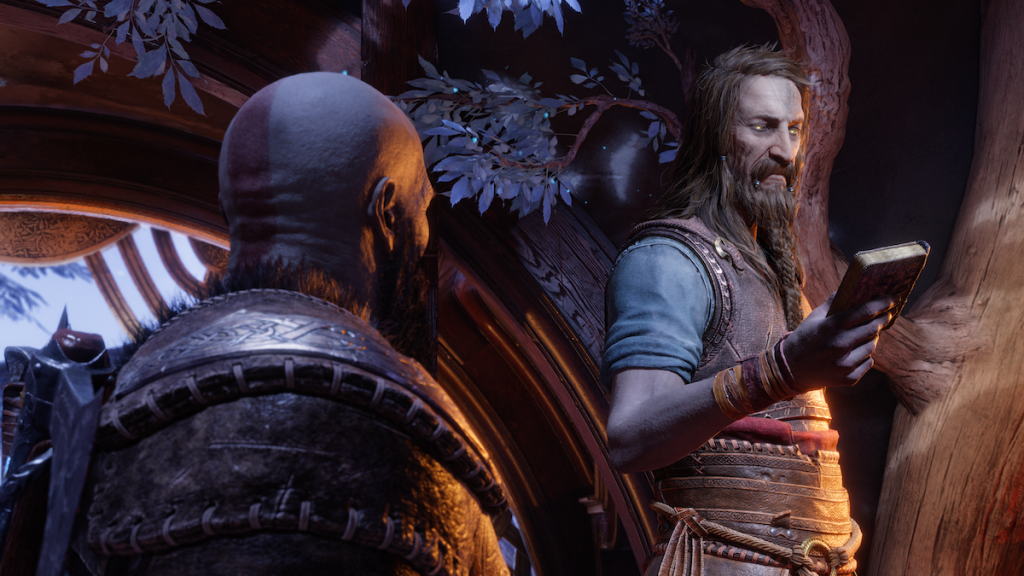
If there is one thing that the story of God of War Ragnarok does falter with, though, it would be pacing. Ragnarok is a bit longer than the previous entry in the series, as my own playthrough took me about 30 hours to finish the main story while doing a number of side quests. This greater length doesn’t always feel warranted as some of the missions that Kratos and Atreus go on in the middle portion of the experience seem like they could have been cut out without sacrificing much in terms of narrative depth. Although these moments do still provide great writing and character moments, the story beats that are at the core don’t always feel worthwhile.
One of the odd parts of God of War Ragnarok deals with the aforementioned theme of fate, which is constantly brought up. Because of this, Ragnarok at times lacks major surprises as the game opts to tip its hand at what will happen in the future. And while this central storytelling idea is used well as it’s meant to push Kratos and Atreus to see if they can alter what they know about their own destinies, it also means that you’re never going to be shocked by where the game goes next. This is even more true if you happen to have a previous history of Norse mythology and its major players.
As briefly mentioned before, Ragnarok has fantastic character moments in spades. One of the biggest reasons why 2018’s God of War ended up being such a big hit is because of its larger-than-life characters that all felt intrinsically human. Not only were Kratos and Atreus a captivating pair of protagonists, but other companions and antagonists such as Brok, Sindi, Mimir, Freya, and Baldur proved to be just as compelling. In this same way, God of War Ragnarok’s best aspect is that of its cast and their resulting interactions.
While Ragnarok continues to expand in intriguing ways with characters that we already know, it also introduces a number of new faces over the course of its stay. Some of these characters like Thor and Odin were broadly established via myths and stories in the previous game, but actually meeting them and learning more about their roles within this world was greatly captivating.
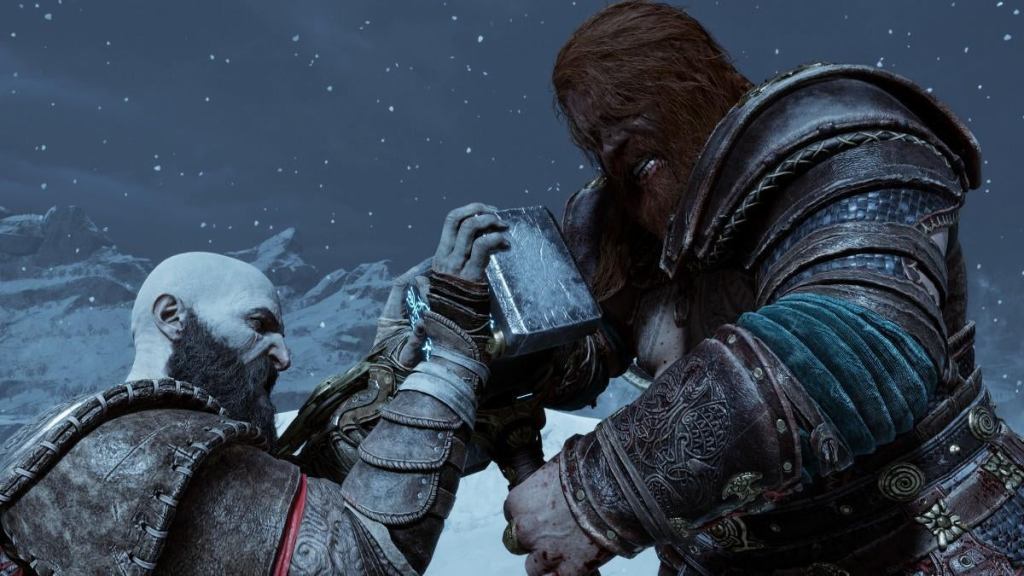
Outside of the main cast of heroes, Thor and Odin are the two strongest characters seen throughout the entirety of Ragnarok. Thor contains far more depth than I would have ever expected and makes for an excellent foil to Kratos. Conversely, Odin fills an archetype that we haven’t really seen before in the God of War series. Rather than knowing if Odin is completely good or completely bad, his motives are almost constantly shrouded in mystery and are being questioned. This continued reframing of his actions makes you as the player wonder if what you’ve heard about him in the past can be taken as truth, or if instead you’ve been led astray.
Perhaps it goes without saying, but the performances of all of these characters in God of War Ragnarok are downright incredible. Christopher Judge and Sunny Suljic continue to be phenomenal, with Suljic’s performance as Atreus really standing out that much more this time around. Ryan Hurst’s take on Thor is also quite impactful and made me wish that he had even more screen time. Richard Schiff steals each scene that he appears in as Odin and was one of the best casting choices with this sequel. And I also have to shout out Alastair Duncan who portrays Mimir, as the “Smartest Man Alive” might be my favorite character in the entirety of Ragnarok.
Outside of the story, characters, and world of God of War Ragnarok, the thing that’ll you primarily be doing over the course of the game is beating various enemies to a pulp with Kratos. Broadly, the combat mechanics in Ragnarok haven’t been drastically overhauled and have instead just been a bit refined. Kratos has some new abilities that he can use to not only get around environments more quickly and solve puzzles, but also to take down baddies in more unique ways.
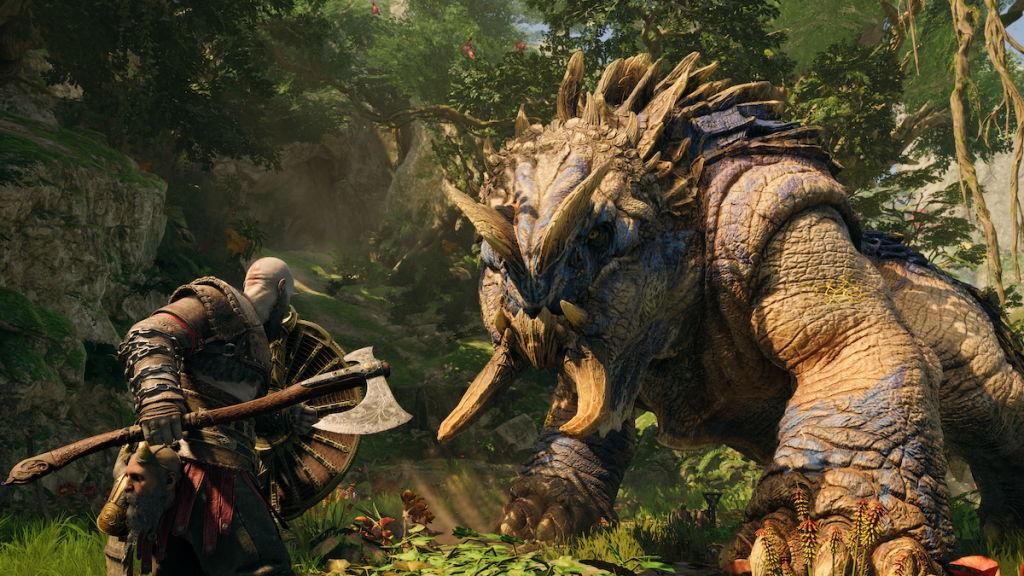
In typical sequel fashion, though, God of War Ragnarok also gives Kratos some new toys to play with. The Leviathan Axe and the Blades of Chaos return once again and are the main tools that Kratos uses for a good chunk of Ragnarok. Eventually, though, a new weapon enters the fray that completely changes the dynamics of combat.
I don’t want to say too much about this new weapon in general because I feel like it’s better left to be discovered by those who will play Ragnarok. That being said, the weapon that Santa Monica Studio opted to give Kratos is definitely one that I didn’t see coming. Initially, I didn’t care for how this item functioned, but as I continued to play, I found that it meshed wonderfully alongside the Blades and Axe. In short, that’s the thing that continues to work best with God of War Ragnarok: the combat has a great sense of flow. Switching between all of the weapons that Kratos has in his toolset is easy and it never feels like it slows down the pace of battle. Some late-game boss fights also do a wonderful job of leaning into this style of play even further and are a ton of fun to take part in.
Likely the biggest gameplay departure in God of War Ragnarok, though, is that the game lets you play as Atreus. This is something that Santa Monica Studio completely kept under wraps prior to release and marks the first time that the God of War series has ever let players control someone outside of Kratos While it’s an enjoyable novelty to play as Atreus, though, I can’t say I loved his gameplay sections as much when compared to his father. Atreus primarily uses his bow as his main weapon, not only to fire arrows, but also to beat down foes. And while this works fine for what it is, playing as Atreus doesn’t feel as visceral or snappy when compared to Kratos, primarily because combat with a bow is just naturally going to be more stilted. All in all, I’m glad that Atreus is able to be played as in Ragnarok, but I’m more pleased that Kratos is still the primary player-controlled character.
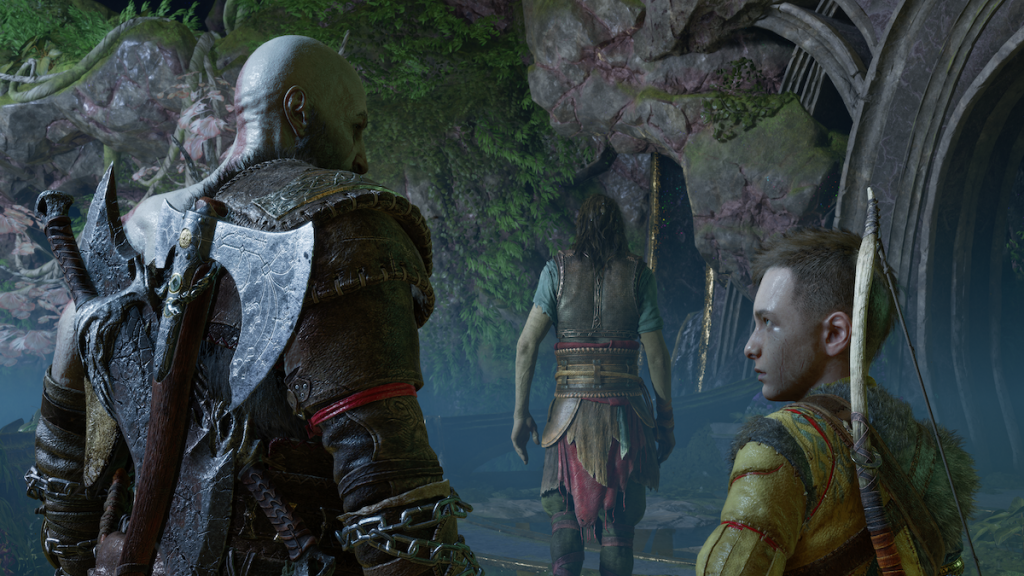
Something that began to annoy me more with God of War Ragnarok compared to the previous entry is that of the gear system. While I was largely fine with the process of obtaining and upgrading armor, abilities, and other items in the previous God of War, Ragnarok started to frustrate me with this system. Although I still like the sense of progression that Ragnarok has when it comes to upgrading Kratos and his gear over time, the gear system itself is far too cumbersome to navigate. Furthermore, it’s hard to ever know which items that are in your inventory are the best of the best, even though the game does try to offset this with an “Auto Equip” feature. There are so many decisions to make at any one point in time that I often also wondered if I was spending my resources in the wisest of ways when it came to upgrades. If Ragnarok featured a more streamlined system that works in this same manner, I think the game would have been much better for it.
If there is one thing that did get a notable boost in Ragnarok, though, it involves skill trees. In the same way as before, Ragnarok deals out XP that can then be used to buy new abilities or improve previously-obtained skills. The difference this time around is that the game also lets you upgrade these skills one step further with additional modifiers if you happen to use that ability enough times. For example, if you use your Leviathan Axe throw a certain number of times against enemies, you’ll eventually be able to buy a new improvement with XP that will give this move an extra boost. This modifier varies between abilities, but typically lets you increase your damage or other similar stats.
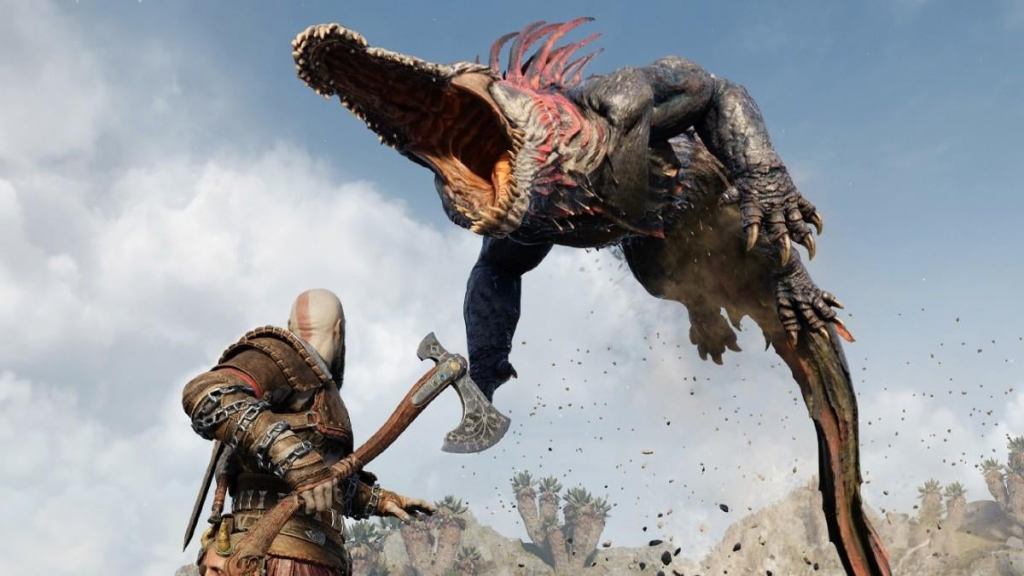
What’s great about this system is that it really encourages you to use all of the various moves and skills that Kratos has in his repertoire. While it might be easy to just button mash and use the same attacks time after time, there are notable rewards in branching out and taking on encounters in different manners. Doing so will let you become even stronger, which then is a big help when taking on some of the game’s harder opponents.
Speaking of some of God of War Ragnarok’s tougher enemies, there’s once again an extensive post-game section where you’ll be able to challenge yourself even further. Side quests are pretty prominent throughout Ragnarok and there’s a good variety of missions to take part in. A decent chunk of these quests center around combat encounters or collectibles, but it’s the ones that look to actually tell stories and further flesh out the Norse world and its denizens that I found the most pleasure in. God of War Ragnarok’s writing continues to be top-tier even in these side quests, which makes the process of going out of your way to complete them less of a chore and more of something that you’ll naturally want to do.
If you do look to do everything that God of War Ragnarok has to offer, you’ll be getting quite familiar with the Nine Realms of the Norse mythos. Many of these Realms were seen in the previous God of War game, and those that do make a return in Ragnarok aren’t all that different from before, which is somewhat disappointing. Still, the new areas that haven’t been seen before like Svartalfheim and Asgard are among the best that have ever been showcased. It’s the diversity of each Realm that shows Santa Monica Studio’s true talents when it comes to art direction readily apparent.
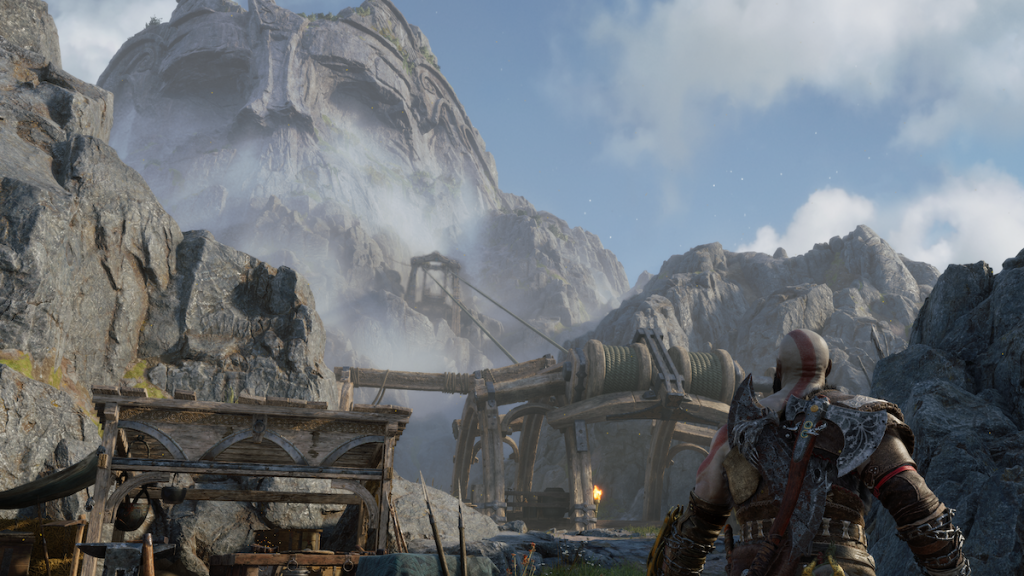
What makes the exploration across all of these various locales that much better comes with Bear McCreary’s (Godzilla: King of the Monsters, 10 Cloverfield Lane) score. The main musical themes and sounds from Ragnarok are reminiscent of what was heard in God of War, but McCreary also goes far harder in this sequel than before. In addition to giving each level its own distinct tone, vibe, and instrumentation, the game’s biggest moments are backed by one of the most booming soundtracks that I think I’ve ever heard video game. I thought it would be difficult for McCreary to top his previous work in God of War, but he proved to do so with relative ease here in the sequel.
Despite having a couple of problems with God of War Ragnarok, it’s hard for me to say that the game is anything less than excellent. Even with high expectations, Ragnarok ended up being a game that I thoroughly enjoyed from its bombastic opening to its character-driven conclusion. Some issues that the previous God of War entry had became more apparent to me with Ragnarok, but otherwise, this is a game that I believe fans are without a doubt going to be happy with.
Rating: 4.5 out of 5
God of War Ragnarok is poised to release on PlayStation 5 and PlayStation 4 later this month on November 9th. A copy of the game was provided by PlayStation for the purpose of this review and it was reviewed on PS5.

